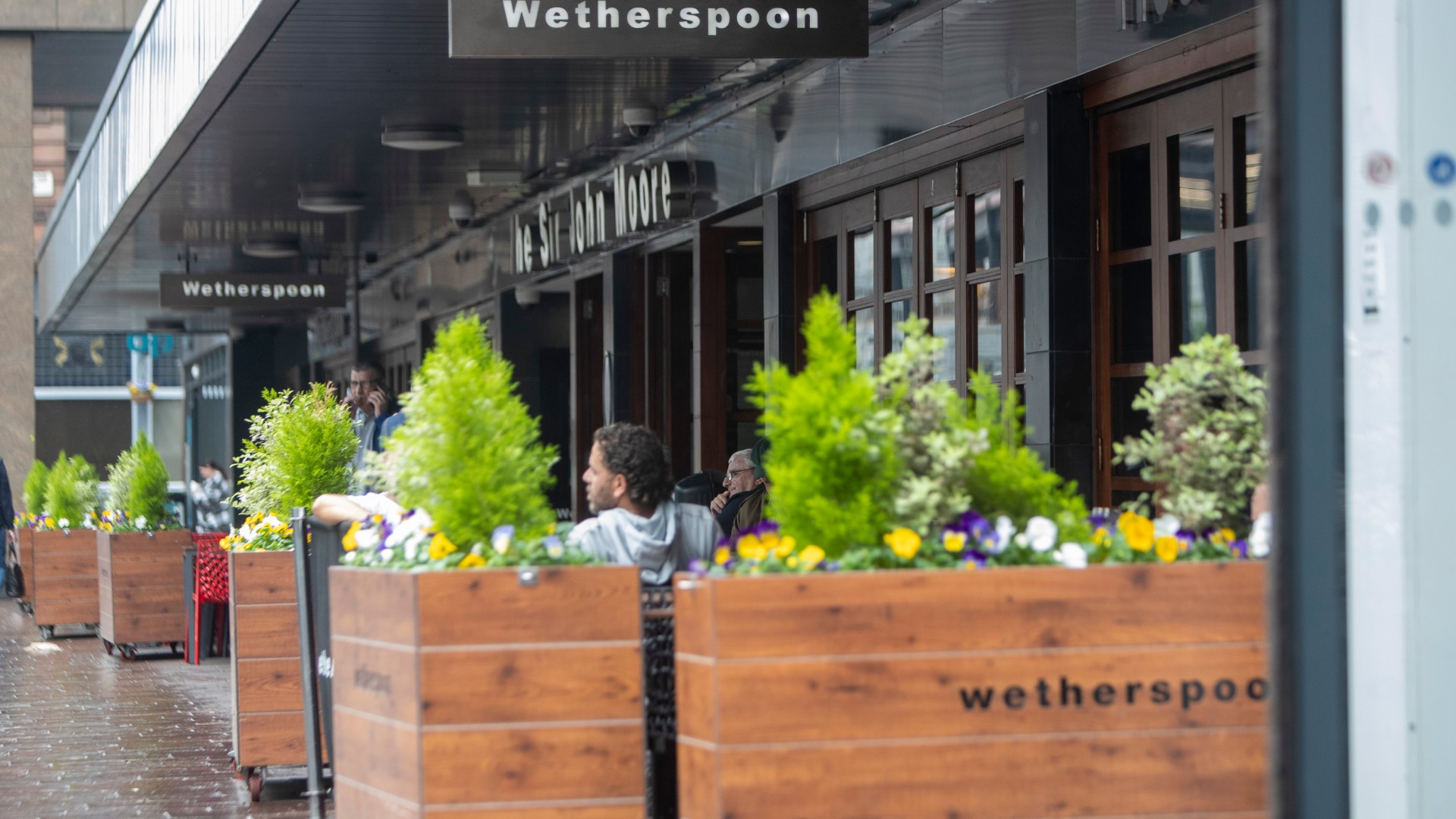Money
What consolidators should be doing ahead of FCA probe

 The Financial Conduct Authority’s recent letter to advice firms has certainly got people talking with its specific mention of consolidators and its desire to gather data from them.
The Financial Conduct Authority’s recent letter to advice firms has certainly got people talking with its specific mention of consolidators and its desire to gather data from them.
The FCA specifically said consolidators are expected to “ensure the delivery of good outcomes is central to your culture”. That should come naturally to any business operating in this area. But, in addition, their “leadership, governance, oversight arrangements and controls should be effective, adequately resourced and commensurate with your growing size and complexity”.
That second part is the bit where appropriate systems need to be put in place to make sure there is genuine oversight. There can be no true leadership or governance among a number of firms spread throughout the country without a central place to collate and analyse data.
They need to analyse all the important pieces of information, whether that’s client reports, investment data or where advisers and paraplanners are spending their time.
I speak to a lot of consolidators, whether it’s those running the businesses or the owners at the private equity houses, and this is often one of the trickiest parts for them: rationalising many businesses and finding a way to gather the right data in an orderly fashion.
Without this, it’s immensely difficult to implement the correct compliance controls and maintain consistent advice and investment processes.
In fact, it’s even difficult to report data the FCA is trying to gather without these systems in place. And don’t forget consolidators need to further scale all their processes as the business continues to grow and absorb more firms.
Consolidators can even take note of the regulator’s own data gathering and “data-led” approach.
The regulator has been pushing to change its culture and enforcement to a much more data-based approach. It’s invested resource and effort to do so, which should make its monitoring more efficient and effective.
To draw the parallel, the central point of acquiring multiple advice and investment management firms is to truly consolidate them. The endgame is to pull together multiple businesses and create efficiencies that work for all parties: the investors, the business and the clients can all be aligned.
That means cost savings that can be passed onto clients and better advice processes to create consistent outcomes for them, too. All together that means a better value proposition for clients and, hand-in-hand, it provides value for the consolidator and makes life easier for advice professionals.
Better data control and monitoring should hit all the right Consumer Duty notes: improved value for money, better consumer communication and support, and improved oversight that maintains consistency in the products and service provided.
This is exactly what the FCA is looking for. The regulator isn’t naive: it knows these large private equity firms are entering the market and spending big to make a profit on their investment.
But it wants to see consolidation that also provides the end client value: they’re the ones at the heart of the business. Value creation for the business certainly doesn’t have to be mutually exclusive from value creation for the end clients. At the end of the day, without them it’s all worth nothing.
The FCA knew gathering data was important in its own regard and has done the right things to make its processes more efficient and data centric. Consolidators can take a leaf out of the regulator’s book and make sure they focus on collecting and analysing the right information to provide value for both clients and the business.
Alex Cowan-Sanluis is chief executive of Platform One
Money
Sigma Homes appoints Heuerman-Williamson as finance director

During his career, he has held senior positions at firms including Barratt and Crest Nicholson.
The post Sigma Homes appoints Heuerman-Williamson as finance director appeared first on Property Week.
Money
How to Find the Best Breakdown Cover in 2024 – Top Providers, Costs & Tips

How to Find the Best Breakdown Cover: A Complete Guide
Choosing the best breakdown cover can feel overwhelming with so many options available, but understanding your needs and comparing the different providers will help you make an informed decision. Whether you’re looking for peace of mind during long road trips or simply need basic assistance for your daily commute, this guide will walk you through the best options, the average cost of breakdown cover, and how to save on your policy.
What Is Breakdown Cover?
Breakdown cover is a type of insurance that helps you when your car breaks down on the road. Depending on the policy you choose, it can include roadside assistance, vehicle recovery, and even cover for emergencies like flat tires or dead batteries. Understanding what services you need and how often you’re on the road will determine what kind of breakdown cover is best for you.
Who Offers the Best Breakdown Cover?
Several major companies provide breakdown cover in the UK, each with different levels of service. Here are some of the top contenders for the best breakdown cover in 2024:
- AA: Often regarded as the best all-round provider, the AA offers 24/7 roadside assistance and a range of coverage options. They have an extensive network and quick response times, making them a reliable choice for motorists.
- RAC: Another popular option, RAC offers comprehensive coverage with added benefits such as a fault report service to help diagnose the issue. They also cover cars, vans, and even motorbikes.
- Green Flag: Known for their affordability, Green Flag is ideal for those looking for more budget-friendly breakdown cover without sacrificing service quality. Their recovery options are flexible, and they cover roadside assistance across the UK and Europe.
- Admiral: Primarily an insurance provider, Admiral offers breakdown cover as an add-on to car insurance. They provide competitive rates, especially for bundled policies, which we’ll discuss later.
- Start Rescue: A lesser-known option but gaining popularity for its low-cost cover and positive customer reviews. Start Rescue offers different levels of breakdown cover, including European cover.
How Much Does Breakdown Cover Cost?
The cost of breakdown cover can vary widely depending on the provider, level of coverage, and whether you’re looking for single or multi-vehicle protection. On average, the cost for basic breakdown cover starts around £30 to £50 per year, with more comprehensive policies costing £70 to £150 annually.
Here’s a breakdown of the typical cover options:
- Roadside Assistance: The most basic form of breakdown cover, where your car is fixed on the spot or towed to a nearby garage if necessary.
- Vehicle Recovery: Offers to tow your vehicle (and you) to your home or destination.
- Home Start: Includes assistance if your car won’t start at home.
- Onward Travel: Provides accommodation or a hire car if your vehicle can’t be fixed right away.
You can also purchase European breakdown cover, which tends to cost more but is essential for those who frequently drive abroad.
Should You Get Bundled Cover or a Separate Policy?
When finding the best breakdown cover, one of the key considerations is whether to bundle it with your car insurance or purchase a separate policy.
Bundled Breakdown Cover:
- Cost-Effective: Bundling breakdown cover with your car insurance or even your bank account services can be cheaper. Many providers, such as Admiral and Direct Line, offer discounts when you take out multiple types of insurance or services together.
- Convenience: Having both your car insurance and breakdown cover with the same provider means dealing with fewer companies, which can simplify the claims process and save time.
Separate Breakdown Cover:
- Tailored Services: Buying breakdown cover separately allows you to tailor your policy specifically to your needs. It also enables you to compare the best breakdown cover providers to find the best deal.
- Switch Flexibility: When your breakdown cover is separate, you can easily switch providers to get a better deal without affecting your car insurance.
In many cases, bundling can save money, but it’s always worth comparing prices and services. Some bundled policies may not include all the features you need, so it’s essential to review the details carefully.
How to Save on Breakdown Cover
If you’re looking for the best breakdown cover at a reasonable price, there are several ways to save:
- Compare Prices: Use price comparison websites to look at the rates and services of different breakdown cover providers. Sites like Compare the Market or MoneySuperMarket can offer deals exclusive to online shoppers.
- Look for Discounts: Many providers offer discounts for new customers, online sign-ups, or for switching from another provider. Always check the provider’s website or ask if there are any promotional offers available.
- Annual vs Monthly Payments: While it may be tempting to pay for breakdown cover monthly, it’s often cheaper to pay for the full year in advance. This can save you up to 10-15% depending on the provider.
- Family and Multi-Car Discounts: If you have more than one car in your household, look for family or multi-car discounts. Many providers offer reduced rates if you need cover for more than one vehicle.
- Evaluate Your Needs: Don’t pay for features you don’t need. If you only drive locally, for instance, you might not need a comprehensive policy with nationwide recovery. Similarly, if you rarely travel abroad, European cover might be an unnecessary expense.
- Consider Cashback Offers: Some banks and credit card companies offer cashback or rewards when you purchase breakdown cover through their services. This can be a great way to save a little extra.
- Automatic Renewals: Beware of automatic renewals, which often come at a higher price. Set a reminder to shop around for a better deal when your policy is up for renewal.
The best Breakdown cover 2024
Finding the best breakdown cover doesn’t have to be difficult. Start by identifying your needs, comparing providers, and looking for discounts or bundled deals that can save you money. Whether you opt for a basic roadside assistance policy or a more comprehensive vehicle recovery and onward travel plan, there’s a wide range of breakdown cover options available to suit every budget and driving habit.
Remember to regularly review your policy and ensure it offers the right level of protection for you. With the right breakdown cover in place, you can drive with the confidence that help is only a phone call away in the event of a roadside emergency.
Money
How to combat quiet quitting and plug the employee engagement gap


Employee engagement in the UK has hit a concerning 10-year low, with only 10% of employees feeling engaged, compared to the global average of 23%, according to workplace consultants Gallup.
This is particularly alarming for the UK financial services sector, which faces significant challenges as generational shifts approach.
By 2025, Gen Z will make up a quarter of the workforce, while one-third of financial advisers are expected to retire within the next three years.
To navigate this transition, firms must improve their employee engagement and management practices to attract and retain the next generation of advisers.
Disengaged employees have 37% higher absenteeism and 18% lower productivity
As Gallup highlights, Gen Z has zero tolerance for poor management leading to disengagement. If it’s not working for them, they move on.
Indeed, the consequences of low engagement are substantial. Gallup research shows disengaged employees have 37% higher absenteeism and 18% lower productivity.
Disengagement also drives high turnover, as employees leave for more fulfilling roles, increasing recruitment costs and damaging customer service. Ultimately, low engagement threatens a company’s reputation and profitability, making it a critical business risk.
Despite businesses collectively spending £257bn annually on engagement initiatives – a figure comparable to the National Health Service budget – many still struggle to make progress.
Gen Z has zero tolerance for poor management leading to disengagement. If it’s not working for them, they move on
So, why are these efforts not yielding significant improvements?
Executive coach and former head of Vanguard UK distribution Neil Cowell and I have wrestled with this issue. Having worked with Neil for over a decade, including placing 14 key people into his team at Vanguard, we’ve gained valuable insights from both leadership and recruitment perspectives.
A pressing concern that must be addressed is the rise of “quiet quitting” – a trend that has gained momentum post-pandemic as employees reassessed their work-life balance.
Quiet quitting refers to employees doing the bare minimum without leaving their jobs. Alarmingly, Gallup reports that six in 10 employees now fall into this category.
This trend should serve as a wake-up call for businesses to rethink their workplace culture, recognition systems and communication practices.
Quiet quitting refers to employees doing the bare minimum without leaving their jobs. Six in 10 employees now fall into this category
While many leaders turn to “Taco Tuesdays” and “Beer and Pizza Fridays,” the real issue runs deeper. To address disengagement, leaders must cultivate a culture of trust, communicate clear visions and show genuine care for their teams.
When employees feel supported and valued, they’re more likely to go above and beyond. Leaders who provide feedback, foster collaboration and challenge their teams create an environment where engagement thrives.
The benefits are significant, with Gallup research showing high engagement can boost profitability by 21%.
However, many organisations continue to struggle in making meaningful progress. Substantial investments in engagement programmes often fall short because they rely on superficial approaches that lack authentic leadership.
High engagement can boost profitability by 21%
Employees can quickly sense when these efforts are merely box-ticking exercises, which only deepens disengagement.
To drive meaningful change, businesses need a more hands-on, tailored approach to leadership development. Leadership behaviours must align with structured engagement programmes for real impact. Strong leadership is the foundation of sustained engagement and, when coupled with thoughtful initiatives, leads to higher engagement and better organisational performance.
At the heart of employee engagement is what employees truly crave: a sense of purpose and connection. Employees need to understand how their work contributes to the broader goals of the company and why it matters.
Recognition plays a crucial role in this – not just through financial rewards but also through genuine acknowledgment of their efforts.
In about 80% of cases, when someone accepts a counter offer to stay in their current job, they still leave within a year
In about 80% of cases, when someone accepts a counter offer to stay in their current job, they still leave within a year. This underscores that employees are seeking more than just monetary compensation; they want to feel valued and supported by leaders who care about their development and wellbeing.
In conclusion, employee engagement is critical to organisational success. To make meaningful progress, companies must go beyond surface-level solutions and take a more proactive approach to identifying and addressing the root causes of disengagement.
By fostering a sense of purpose, recognising employee contributions and embracing authentic leadership, organisations can create a culture where employees are not only motivated but fully invested in the company’s success. This approach will drive sustainable growth, increase revenue and ensure a thriving, engaged workforce for years to come.
Simon Evans is director at Clearcut Consulting – Engage First
Money
Wetherspoons reveals Christmas menu including brie pizza – but axes classic festive treat

WETHERSPOON’S has unveiled its 2024 Christmas menu including a brie pizza – but some items from last year haven’t made the cut.
The pub chain’s festive range is available from November 13 until December 31 with some tasty bites and meal deals on offer.
Hungry punters will be able to snap up a new 11 inch cheese pizza combining gooey mozzarella, brie, cheddar, blue cheese sauce topped with rocket from £9.84.
Those with less of an appetite can get a smaller eight inch portion for £6.51.
There’s also a new vegan five gold rings burger on offer from £10.43, combining a Beyond Meat plant-based patty, BBQ sauce, iceberg lettuce, tomato and red onion, topped with five onion rings.
And punters will once again be able to feast on the sliced turkey breast and winter vegetables meal with drink from £11.99.
Read more on Wetherspoons
The classic menu option comes with four slices of turkey breast, pork, apricot and cranberry stuffing, carrots, parsnips, Maris Piper mash, two pigs-in-blankets, peas, cranberry sauce and gravy.
The iconic big cheese burger is also back on menus within weeks, featuring gooey brie slices, topped with halloumi fries and blue cheese dip, all for £10.43.
Fans of a sweet dessert will be keen on the cookies and cream blondie too, which is going on sale for £4.99.
The rich chocolate brownie is packed with white chocolate and crushed cookie pieces, served with vanilla ice cream and chocolate cookie crumbs.
The Deli Deals, which include a chicken, stuffing, bacon and cranberry panini, brie and cranberry panini, small southern-fried chicken and stuffing wrap and southern-fried chicken and stuffing wrap are also back from £4.11 next month.
The Deli Deals and other festive meal options, including burgers, pizzas and roast, all come with a soft or alcoholic drink.
It’s not all good news though as some of the iconic mains and puddings on sale in 2023 have been axed this year.
Hungry punters won’t be able to get their hands on the salted caramel sticky toffee pudding or iconic mince tart.
Meanwhile, the bacon and garlic mushroom pizza isn’t available for customers to buy this Christmas.
Bear in mind, the prices of each meal above can vary between branches so you may not pay the exact same amount.
Make sure you double-check what’s on offer at your local branch and ask at the bar for prices.
Wetherspoons full Christmas menu is listed as follows:
- Sliced turkey breast and winter vegetables (with soft drink) – £11.99
- Sliced turkey breast and winter vegetables (with alcoholic drink) – £13.52
- The big cheese burger (with soft drink) – £10.43
- The big cheese burger (with alcoholic drink) – £11.96
- Brie & bacon burger (with soft drink) – £10.43
- Brie & bacon burger (with alcoholic drink) – £11.96
- Chicken & stuffing burger (with soft drink) – £10.43
- Chicken & stuffing burger (with alcoholic drink) – £11.96
- The five gold rings burger (with soft drink) – £10.43
- The five gold rings burger (with alcoholic drink) – £11.96
- 11″ chicken, stuffing, bacon & Brie pizza (with soft drink) – £11.02
- 11″ chicken, stuffing, bacon & Brie pizza (with alcoholic drink) – £12.55
- 11″ big cheese pizza (with soft drink) – £9.84
- 11″ big cheese pizza (with alcoholic drink) – £11.37
- Any 3 small plates – £14.93
- Pigs in Blankets – £5.19
- The big cheese chips – £6.03
- 8″ chicken, stuffing, bacon & Brie pizza – £7.09
- 8″ big cheese pizza – £6.51
- Chicken, stuffing, bacon & cranberry panini (with soft drink) – £5.70
- Chicken, stuffing, bacon & cranberry panini (with alcoholic drink) – £7.23
- Brie & cranberry panini (with soft drink) – £5.70
- Brie & cranberry panini (with alcoholic drink) – £7.23
- 12″ southern-fried chicken & stuffing wrap (with soft drink) – £5.70
- 12″ southern-fried chicken & stuffing wrap (with alcoholic drink) – £7.23
- 10″ southern-fried chicken & stuffing wrap (with soft drink) – £4.11
- 10″ southern-fried chicken & stuffing wrap (with alcoholic drink) – £5.64
- Cookies & cream blondie – £4.99
- Chocolate-Orange Espresso Martini each – £5.87
- Chocolate-Orange Martini 2 for – £9
Wetherspoons isn’t the only chain or retailer gearing up for the festive period.
Côte restaurants has launched an indulgent range of Christmas meals that shoppers can get delivered to their front door.
And the range has been designed by none other than Steve Allen – Gordon’s Ramsay’s former Executive Chef.
Tesco has also unveiled its Christmas range for 2024, including pigs in blankets stuffing balls and a fancy dessert costing £20.
Meanwhile, Aldi is offering customers some quirky items this year including fudge-flavoured cheese.
M&S and Sainsbury’s have both shared their Christmas menus with customers too.
How can I save money at Wetherspoons?
PUB-GOERS love Wetherspoons for its competitive pricing and low-cost meals – but did you know there are more ways to save money?
Senior consumer reporter Olivia Marshall explains how.
Free refills – Buy a £1.50 tea, coffee or hot chocolate and you can get free refills. The deal is available all day, every day.
Check a map – Prices can vary from one location the next, even those close to each other.
So if you’re planning a pint at a Spoons, it’s worth popping in nearby pubs to see if you’re settling in at the cheapest.
Choose your day – Each night the pub chain runs certain food theme nights.
For instance, every Thursday night is curry club, where diners can get a main meal and a drink for a set price cheaper than usual.
Pick-up vouchers – Students can often pick up voucher books in
their local near universities, which offer discounts on food and drink, so keep your eyes peeled.
Get appy – The Wetherspoons app allows you to order and pay for your drink and food from your table – but you don’t need to be in the pub to use it.
Taking full advantage of this, cheeky customers have used social media to ask their friends and family to order them drinks. The app is free to download on the App Store or Google Play.
Check the date – Every year, Spoons holds its Tax Equality Day to highlight the benefits of a permanently reduced tax bill for the pub industry.
It usually takes place in September, and last year it fell on Thursday, September 14.
As well as its 12-day Real Ale Festival every Autumn, Wetherspoons also holds a Spring Festival.
Do you have a money problem that needs sorting? Get in touch by emailing money-sm@news.co.uk.
Plus, you can join our Sun Money Chats and Tips Facebook group to share your tips and stories
Money
Impact Healthcare changes name to align with new FCA rules

The care home group’s stock market ticker will become CRT and trading under the new name will begin on Tuesday morning.
The post Impact Healthcare changes name to align with new FCA rules appeared first on Property Week.
Money
Homes Selling Faster in October 2024

UK Housing Market Sees Homes Selling Quicker in October 2024
The UK housing market has experienced a notable uptick in activity this October, with houses selling quicker than in previous months. According to data from property platform Rightmove, the number of homes sold in October 2024 has increased by a third compared to the same time last year. This surge in demand is driven by several key factors, including improved market confidence, more realistic pricing by sellers, and an easing of mortgage rates. As a result, homes are moving off the market faster, signaling a more competitive environment for buyers.
Boost in Buyer Confidence
One of the driving forces behind the faster sale times is a renewed sense of confidence among buyers. The economic uncertainty that gripped much of 2023 has somewhat stabilised in 2024, allowing prospective homeowners to re-enter the market with greater assurance. The lingering impacts of inflation and cost-of-living increases have moderated, and while the economy remains cautious, there’s less fear of drastic interest rate hikes.
This resurgence in market confidence has led to an increased number of buyers looking to capitalise on relatively stable conditions. The housing market is traditionally slower toward the end of the year, but the increased activity in October reflects a change in the typical seasonal pattern. Buyers seem eager to make purchases before any potential changes to mortgage rates or economic conditions in the months ahead.
Easing Mortgage Rates Boost Demand
Another significant factor driving the quicker sale of homes is the slight relaxation in mortgage rates. After a period of high interest rates in response to the inflation surge in 2023, rates have started to ease in 2024. While mortgage rates are still higher than in the low-interest years of the pandemic, the market has seen a dip that makes borrowing more manageable for potential buyers.
With mortgage rates coming down, buyers are better able to secure financing for property purchases. This is especially relevant for first-time buyers and those looking to remortgage, as they now have more flexibility to act quickly. The increased affordability of mortgages has contributed to a rise in property demand, pushing homes to sell at a faster pace as buyers seize the opportunity.
Mortgage rates are predicted to continue falling in 2025. –
More Realistic Pricing from Sellers
Sellers have also played a key role in driving the quicker sale of homes by adjusting their expectations. During 2023, many sellers held onto unrealistically high prices, believing that the market would continue to favor them. However, the slower market conditions earlier in 2024 forced a reevaluation, with many sellers now pricing their homes more in line with market trends.
This shift in pricing strategy has made properties more attractive to buyers. The combination of realistic pricing and the desire to close deals quickly before year-end has created a perfect storm, with homes selling faster than anticipated. Sellers are becoming more willing to negotiate and settle for prices closer to the asking price, leading to quicker transactions overall.
Regional Variations in Sale Times
While the overall trend points to homes selling faster across the UK, there are regional variations in how the market is performing. Major cities such as London, Manchester, and Birmingham have seen particularly high levels of demand, pushing sale times down significantly. In these areas, the competition for properties is fierce, and homes are often being snapped up within days of hitting the market.
You can see the most expensive places to buy a home in the UK here.
On the other hand, more rural areas and smaller towns are experiencing a steadier, though still positive, increase in sales activity. These regions have also benefited from the easing of mortgage rates and improved pricing strategies, though the demand isn’t as intense as in urban centers. As remote work remains a viable option for many, there is still a steady interest in properties outside of major metropolitan areas, contributing to quicker sales nationwide.
Impact of New Housing Stock
Another factor contributing to the quicker sale of homes is the availability of new housing stock. Several new developments have come to market in 2024, adding fresh inventory at a time when demand is high. These new builds, which often come with energy-efficient features and modern amenities, are especially attractive to buyers who may be concerned about future utility costs or the need for costly home renovations.
The addition of new housing options also helps reduce some of the bottlenecks in the market by offering a wider variety of homes to choose from. This diversity in housing stock, combined with competitive pricing and mortgage accessibility, is helping to speed up transactions as buyers find homes that meet their needs more easily.
The Role of Buy-to-Let Investors
Buy-to-let investors are also playing a role in the quick turnaround of property sales. With the rental market remaining strong, many investors see the current housing market conditions as a prime opportunity to expand their portfolios. Lower mortgage rates and the potential for long-term rental income make it an appealing time for landlords to purchase additional properties.
As a result, buy-to-let investors are snapping up homes that are suitable for renting, contributing to the overall speed at which properties are being sold. This has been particularly noticeable in cities with high demand for rental properties, where investors are keen to secure homes before the market becomes more competitive.
Outlook for the Rest of 2024
Looking ahead, the trend of homes selling faster is expected to continue, especially as we move into the final months of the year. Buyers are eager to finalise purchases before any potential economic changes, and sellers are motivated to close deals before the holiday season slows down activity.
However, experts caution that the market may face some uncertainty in early 2025, depending on how interest rates and inflation evolve. While the current environment is favorable for quick sales, any shifts in these key factors could influence how the housing market performs in the near future.
In summary, October 2024 has seen a notable increase in the speed at which homes are being sold across the UK. Improved market confidence, easing mortgage rates, and more realistic pricing from sellers have all contributed to this surge in activity. As the housing market adapts to these conditions, both buyers and sellers are benefiting from quicker transactions, making this an exciting time for the UK property market.
-

 Technology4 weeks ago
Technology4 weeks agoIs sharing your smartphone PIN part of a healthy relationship?
-

 Science & Environment1 month ago
Science & Environment1 month agoHyperelastic gel is one of the stretchiest materials known to science
-

 Science & Environment1 month ago
Science & Environment1 month ago‘Running of the bulls’ festival crowds move like charged particles
-

 Science & Environment1 month ago
Science & Environment1 month agoHow to unsnarl a tangle of threads, according to physics
-

 Science & Environment1 month ago
Science & Environment1 month agoMaxwell’s demon charges quantum batteries inside of a quantum computer
-

 Technology1 month ago
Technology1 month agoWould-be reality TV contestants ‘not looking real’
-

 Science & Environment4 weeks ago
Science & Environment4 weeks agoX-rays reveal half-billion-year-old insect ancestor
-

 Science & Environment1 month ago
Science & Environment1 month agoSunlight-trapping device can generate temperatures over 1000°C
-

 Science & Environment1 month ago
Science & Environment1 month agoLiquid crystals could improve quantum communication devices
-

 Science & Environment1 month ago
Science & Environment1 month agoQuantum ‘supersolid’ matter stirred using magnets
-

 Womens Workouts4 weeks ago
Womens Workouts4 weeks ago3 Day Full Body Women’s Dumbbell Only Workout
-

 Science & Environment1 month ago
Science & Environment1 month agoWhy this is a golden age for life to thrive across the universe
-

 Science & Environment1 month ago
Science & Environment1 month agoLaser helps turn an electron into a coil of mass and charge
-

 TV3 weeks ago
TV3 weeks agoসারাদেশে দিনব্যাপী বৃষ্টির পূর্বাভাস; সমুদ্রবন্দরে ৩ নম্বর সংকেত | Weather Today | Jamuna TV
-

 Science & Environment1 month ago
Science & Environment1 month agoA new kind of experiment at the Large Hadron Collider could unravel quantum reality
-

 Science & Environment1 month ago
Science & Environment1 month agoQuantum forces used to automatically assemble tiny device
-

 Science & Environment1 month ago
Science & Environment1 month agoNerve fibres in the brain could generate quantum entanglement
-

 Science & Environment1 month ago
Science & Environment1 month agoHow to wrap your mind around the real multiverse
-

 Technology3 weeks ago
Technology3 weeks agoUkraine is using AI to manage the removal of Russian landmines
-

 Science & Environment1 month ago
Science & Environment1 month agoA slight curve helps rocks make the biggest splash
-

 Science & Environment1 month ago
Science & Environment1 month agoITER: Is the world’s biggest fusion experiment dead after new delay to 2035?
-
Business3 weeks ago
DoJ accuses Donald Trump of ‘private criminal effort’ to overturn 2020 election
-

 Business2 weeks ago
Business2 weeks agoWhen to tip and when not to tip
-
News1 month ago
the pick of new debut fiction
-

 News1 month ago
News1 month ago▶️ Hamas in the West Bank: Rising Support and Deadly Attacks You Might Not Know About
-

 Science & Environment1 month ago
Science & Environment1 month agoTime travel sci-fi novel is a rip-roaringly good thought experiment
-

 News1 month ago
News1 month ago▶️ Media Bias: How They Spin Attack on Hezbollah and Ignore the Reality
-

 Science & Environment1 month ago
Science & Environment1 month agoNuclear fusion experiment overcomes two key operating hurdles
-

 News4 weeks ago
News4 weeks agoOur millionaire neighbour blocks us from using public footpath & screams at us in street.. it’s like living in a WARZONE – WordupNews
-

 Technology4 weeks ago
Technology4 weeks agoWhy Machines Learn: A clever primer makes sense of what makes AI possible
-

 MMA3 weeks ago
MMA3 weeks agoJulianna Peña trashes Raquel Pennington’s behavior as champ
-

 News2 weeks ago
News2 weeks agoMassive blasts in Beirut after renewed Israeli air strikes
-

 News2 weeks ago
News2 weeks agoNavigating the News Void: Opportunities for Revitalization
-

 Technology3 weeks ago
Technology3 weeks agoMicrophone made of atom-thick graphene could be used in smartphones
-

 Football3 weeks ago
Football3 weeks agoRangers & Celtic ready for first SWPL derby showdown
-

 Science & Environment1 month ago
Science & Environment1 month agoPhysicists have worked out how to melt any material
-

 MMA3 weeks ago
MMA3 weeks agoPereira vs. Rountree prediction: Champ chases legend status
-

 Technology2 weeks ago
Technology2 weeks agoSamsung Passkeys will work with Samsung’s smart home devices
-

 News2 weeks ago
News2 weeks ago▶ Hamas Spent $1B on Tunnels Instead of Investing in a Future for Gaza’s People
-

 Sport3 weeks ago
Sport3 weeks agoWorld’s sexiest referee Claudia Romani shows off incredible figure in animal print bikini on South Beach
-

 Technology3 weeks ago
Technology3 weeks agoThis AI video generator can melt, crush, blow up, or turn anything into cake
-

 Sport3 weeks ago
Sport3 weeks agoBoxing: World champion Nick Ball set for Liverpool homecoming against Ronny Rios
-

 TV2 weeks ago
TV2 weeks agoLove Island star sparks feud rumours as one Islander is missing from glam girls’ night
-

 Sport2 weeks ago
Sport2 weeks agoWales fall to second loss of WXV against Italy
-

 News3 weeks ago
News3 weeks agoHeartbreaking end to search as body of influencer, 27, found after yacht party shipwreck on ‘Devil’s Throat’ coastline
-

 News2 weeks ago
News2 weeks agoHeavy strikes shake Beirut as Israel expands Lebanon campaign
-

 Sport2 weeks ago
Sport2 weeks agoCoco Gauff stages superb comeback to reach China Open final
-

 Science & Environment1 month ago
Science & Environment1 month agoPhysicists are grappling with their own reproducibility crisis
-

 TV3 weeks ago
TV3 weeks agoPhillip Schofield accidentally sets his camp on FIRE after using emergency radio to Channel 5 crew
-

 Technology3 weeks ago
Technology3 weeks agoTexas is suing TikTok for allegedly violating its new child privacy law
-

 Sport3 weeks ago
Sport3 weeks agoSturm Graz: How Austrians ended Red Bull’s title dominance
-

 News2 weeks ago
News2 weeks agoFamily plans to honor hurricane victim using logs from fallen tree that killed him
-

 MMA2 weeks ago
MMA2 weeks agoPereira vs. Rountree preview show live stream
-

 MMA2 weeks ago
MMA2 weeks ago‘Uncrowned queen’ Kayla Harrison tastes blood, wants UFC title run
-

 MMA3 weeks ago
MMA3 weeks agoDana White’s Contender Series 74 recap, analysis, winner grades
-

 Technology1 month ago
Technology1 month agoMeta has a major opportunity to win the AI hardware race
-
Business3 weeks ago
Eurosceptic Andrej Babiš eyes return to power in Czech Republic
-

 News1 month ago
News1 month agoYou’re a Hypocrite, And So Am I
-

 Sport1 month ago
Sport1 month agoJoshua vs Dubois: Chris Eubank Jr says ‘AJ’ could beat Tyson Fury and any other heavyweight in the world
-

 Science & Environment1 month ago
Science & Environment1 month agoA tale of two mysteries: ghostly neutrinos and the proton decay puzzle
-

 Technology3 weeks ago
Technology3 weeks agoArtificial flavours released by cooking aim to improve lab-grown meat
-

 MMA3 weeks ago
MMA3 weeks agoAlex Pereira faces ‘trap game’ vs. Khalil Rountree
-

 Technology3 weeks ago
Technology3 weeks agoAmazon’s Ring just doubled the price of its alarm monitoring service for grandfathered customers
-

 Technology3 weeks ago
Technology3 weeks agoMusk faces SEC questions over X takeover
-

 News3 weeks ago
News3 weeks agoGerman Car Company Declares Bankruptcy – 200 Employees Lose Their Jobs
-

 TV2 weeks ago
TV2 weeks agoMaayavi (මායාවී) | Episode 23 | 02nd October 2024 | Sirasa TV
-

 Technology2 weeks ago
Technology2 weeks agoPopular financial newsletter claims Roblox enables child sexual abuse
-

 Money2 weeks ago
Money2 weeks agoWhy thousands of pensioners WON’T see State Pension rise by full £460 next year
-
Business3 weeks ago
Bank of England warns of ‘future stress’ from hedge fund bets against US Treasuries
-

 Business3 weeks ago
Business3 weeks agoChancellor Rachel Reeves says she needs to raise £20bn. How might she do it?
-

 Football3 weeks ago
Football3 weeks agoSimo Valakari: New St Johnstone boss says Scotland special in his heart
-

 News3 weeks ago
News3 weeks agoHungry customer left gobsmacked as two blokes riding giant HORSES stroll into local chip shop
-
Politics3 weeks ago
Rosie Duffield’s savage departure raises difficult questions for Keir Starmer. He’d be foolish to ignore them | Gaby Hinsliff
-

 News2 weeks ago
News2 weeks agoHull KR 10-8 Warrington Wolves – Robins reach first Super League Grand Final
-

 MMA2 weeks ago
MMA2 weeks agoUFC 307 preview show: Will Alex Pereira’s wild ride continue, or does Khalil Rountree shock the world?
-

 Technology2 weeks ago
Technology2 weeks agoHow to disable Google Assistant on your Pixel Watch 3
-

 Technology2 weeks ago
Technology2 weeks agoA very underrated horror movie sequel is streaming on Max
-

 Sport2 weeks ago
Sport2 weeks agoMan City ask for Premier League season to be DELAYED as Pep Guardiola escalates fixture pile-up row
-

 Science & Environment1 month ago
Science & Environment1 month agoRethinking space and time could let us do away with dark matter
-

 Health & fitness1 month ago
Health & fitness1 month agoThe secret to a six pack – and how to keep your washboard abs in 2022
-

 Science & Environment1 month ago
Science & Environment1 month agoCaroline Ellison aims to duck prison sentence for role in FTX collapse
-
News1 month ago
The Project Censored Newsletter – May 2024
-

 Technology3 weeks ago
Technology3 weeks agoQuantum computers may work better when they ignore causality
-

 Technology3 weeks ago
Technology3 weeks agoUniversity examiners fail to spot ChatGPT answers in real-world test
-

 News1 month ago
News1 month agoNew investigation ordered into ‘doorstep murder’ of Alistair Wilson
-

 Sport3 weeks ago
Sport3 weeks agoWatch UFC star deliver ‘one of the most brutal knockouts ever’ that left opponent laid spark out on the canvas
-

 Technology3 weeks ago
Technology3 weeks agoEpic Games CEO Tim Sweeney renews blast at ‘gatekeeper’ platform owners
-

 Science & Environment3 weeks ago
Science & Environment3 weeks agoMarkets watch for dangers of further escalation
-

 News3 weeks ago
News3 weeks ago‘Blacks for Trump’ and Pennsylvania progressives play for undecided voters
-

 Technology3 weeks ago
Technology3 weeks agoApple iPhone 16 Plus vs Samsung Galaxy S24+
-

 TV2 weeks ago
TV2 weeks agoThe Sopranos: ‘Annoyed’ cast member criticises their final scene in HBO show
-

 Technology2 weeks ago
Technology2 weeks agoUlefone Armor Pad 4 Ultra is now available, at a discount
-

 News2 weeks ago
News2 weeks agoReach CEO Jim Mullen: If government advertises with us, we’ll employ more reporters
-

 Money2 weeks ago
Money2 weeks agoWetherspoons issues update on closures – see the full list of five still at risk and 26 gone for good
-

 News2 weeks ago
News2 weeks agoBalancing India and China Is the Challenge for Sri Lanka’s Dissanayake
-

 Technology2 weeks ago
Technology2 weeks agoThe best shows on Max (formerly HBO Max) right now
-

 MMA3 weeks ago
MMA3 weeks agoHow to watch Salt Lake City title fights, lineup, odds, more
-
Business3 weeks ago
Top shale boss says US ‘unusually vulnerable’ to Middle East oil shock
-

 Technology3 weeks ago
Technology3 weeks agoJ.B. Hunt and UP.Labs launch venture lab to build logistics startups
-

 News3 weeks ago
News3 weeks agoWoman who died of cancer ‘was misdiagnosed on phone call with GP’


You must be logged in to post a comment Login